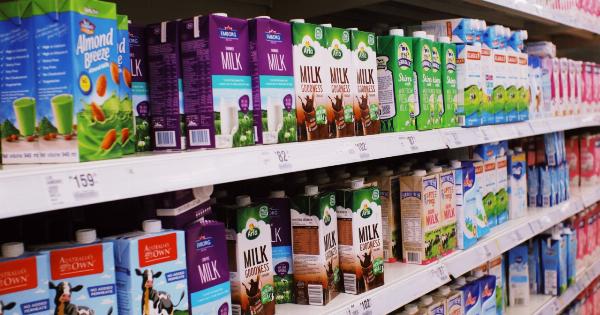For decades, we have been told that milk is an essential part of a balanced diet – that it is a rich source of calcium and other nutrients that are vital for good health.
However, recent research shows that there are many hidden dangers associated with consuming dairy products, and that milk is not the bone-building elixir that it once was believed to be.
The Problem with Milk: It’s Not As Nutritious As You Think
Milk is often touted as a good source of calcium, and it’s true that it does contain this vital mineral. However, the reality is that milk is only one of many sources of calcium, and it’s not necessarily the best one.
In fact, many other foods, such as sardines, kale, and almonds, are even richer in calcium than milk.
Moreover, milk is high in fat and cholesterol, which can raise your risk of heart disease, stroke, and other health problems.
While low-fat and non-fat milk options are available, these products are often heavily processed and contain a variety of additives that can reduce their nutritional quality.
The Hidden Dangers of Dairy: Lactose Intolerance and Allergies
One of the biggest problems with milk is that many people are lactose intolerant, which means that they cannot digest lactose, the primary sugar found in milk. This can cause a variety of symptoms, such as bloating, gas, and diarrhea.
While some people with lactose intolerance can still consume small amounts of dairy products without problems, others must avoid them entirely.
In addition, dairy products can be allergenic for some people. Cow’s milk protein allergy is one of the most common food allergies in young children, affecting up to 3% of infants and young children.
This allergy can cause a range of symptoms, including hives, vomiting, and wheezing.
The Hormones and Antibiotics in Milk
Another concern with dairy products is the high levels of hormones and antibiotics that they often contain. Dairy cows are frequently given hormones to increase their milk production, and these hormones can make their way into the milk that we consume.
Research suggests that these hormones can disrupt our own hormone balance, potentially leading to a range of health problems.
Moreover, dairy cows are often given antibiotics to prevent infections. This can lead to the overuse of antibiotics, which can contribute to the development of antibiotic-resistant bacteria.
Additionally, trace amounts of antibiotics can end up in the milk, which can create problems in individuals who are sensitive to these substances.
The Environmental Impact of Dairy
Finally, it’s important to consider the environmental impact of dairy production. Milk production requires a significant amount of water and energy, and it contributes to greenhouse gas emissions and other environmental problems.
Additionally, dairy farming can be harmful to animal welfare, and dairy cows may be subject to cruel living conditions and practices.
The Bottom Line: Is Milk Good or Bad for You?
The evidence suggests that milk is not the nutritional powerhouse that it was once believed to be. While it may be a good source of calcium, it is not the only source, and it comes with a range of potential health risks and environmental concerns.
If you choose to consume milk and dairy products, it’s important to do so in moderation and to choose high-quality, organic products that are free from hormones and antibiotics.
If you are lactose intolerant or have a dairy allergy, it’s best to avoid dairy products entirely and instead focus on other sources of calcium and nutrients.
Fortunately, there are many alternatives to dairy products available, such as soy milk, almond milk, and oat milk, which provide the nutrients you need without the risks associated with dairy.
In the end, the best diet is one that is balanced and includes a wide variety of foods, including plenty of fresh fruits, vegetables, whole grains, and lean proteins.
Consult your healthcare provider or a registered dietitian to find a diet that is tailored to your individual needs.





























